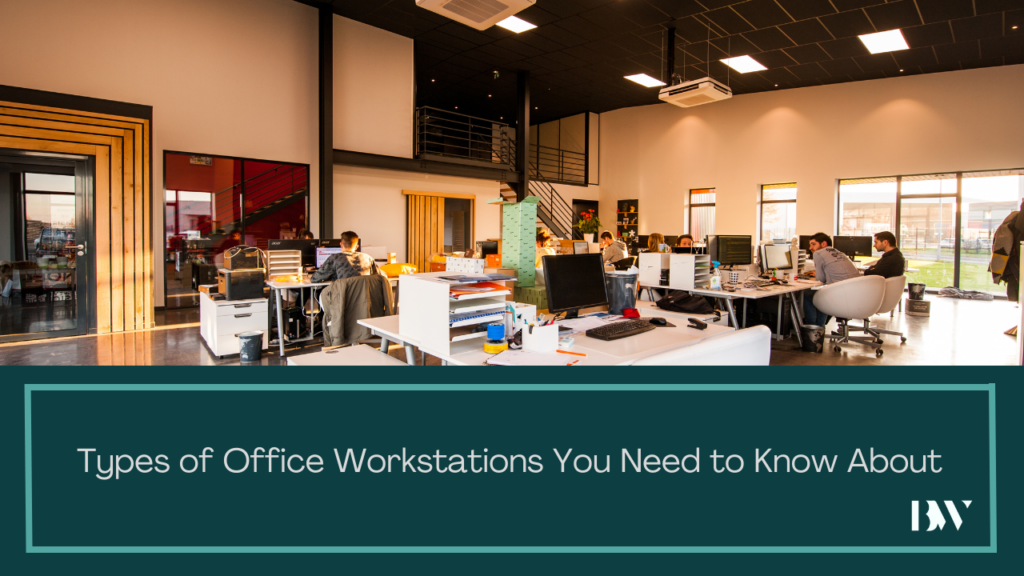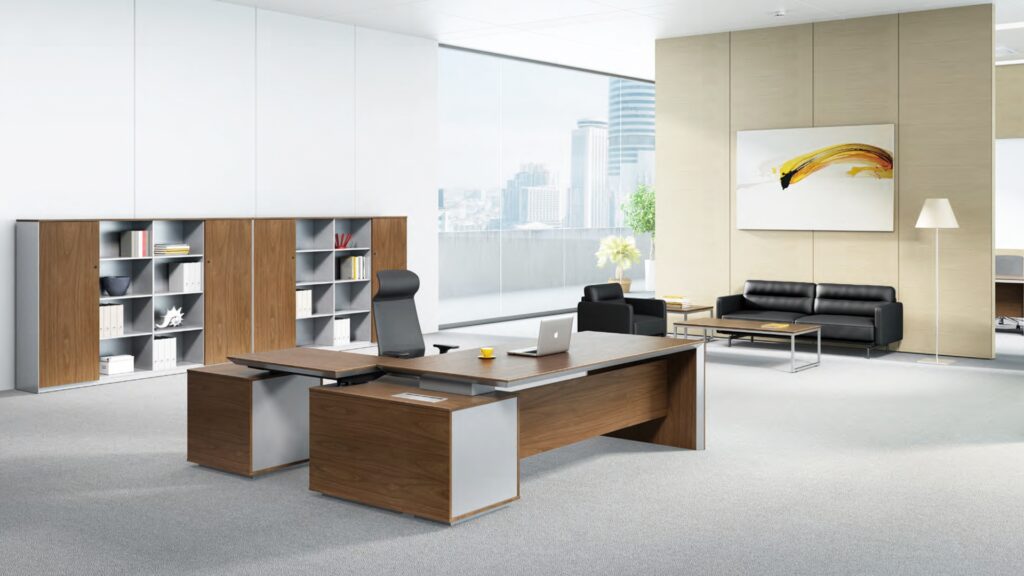
Types of Office Workstations You Need to Know About
Are you still using outdated office workstations? Select modular office workstations for your offices that are tailored to your requirements and the needs of your employees.
Since the days of typical cubicles, office workstations ideas have advanced greatly. Because it has been established to have a favourable impact on employee productivity, businesses today make an effort to make time spent at work as joyful as possible.
It’s crucial to look at the several popular workstation kinds that are taking the business world by storm as the office transforms from a dull, frequently ignored space to a lively hub of activity.

1. Standing Workstations
Standing for at least a portion of the workday may offer health benefits, which is why standing office workstations have grown in popularity recently. These standing office workstations could have a footrest and an elevated surface for the keyboard and computer monitor.
2. Privacy Cubicles
The most typical office workstations are those that have a desk, chair, and storage cabinets. The typical setting for these single-seater modular office workstations is an individual office or cubicle. They’re excellent for protecting privacy and may be a smart choice in offices that handle sensitive or private information.
3. Ergonomic Workstations
Ergonomic office workstations are made to be more comfortable and productive while reducing physical stress. To encourage good posture and lower the risk of injuries, they might incorporate adjustable desks, chairs, and other pieces of furniture.
These are typically adjustable workstation desks that can reduce back pain, carpal tunnel syndrome, body aches, and other problems brought on by long periods of sitting.
4. Team Stations
The teamwork and collaboration that are the goals of these collaborative office workstations. They may be found in public spaces or specialised meeting rooms, and they might have a table or desk with room for several people to sit.
They can be any shape, size, or layout and usually have no walls. In fact, innovative team stations offer a lively environment for better planning and bean bags in place of traditional chairs.
5. Hot Desks
Hot desks are modular office workstations that are available to any employee of the company on a first-come, first-served basis. They are frequently used by organisations with mobile or remote workforces or co-working facilities.
6. Cluster Office Workstations
Consider a workstation desk built for a cluster of employees to encourage communication and collaboration. And that’s it, then!
Each employee has their own personal space and privacy while still being in close proximity to one another, similar to cubicles.
7. F3 Screen System Workstations
F3 screen system office workstations offer cable management and accessory support and exist in several configuration types.
Office workstations with F3 screen systems offer a variety of panel heights, materials, and built-in storage choices. In fact, they increase employee productivity in addition to offering a cosy and ergonomic workstation.
These office workstations for modular offices offer flexibility. To fit a screen, you can have built-in desk units or desk-mounted solutions. You have the choice of a side multifunctional unit or a freestanding unit beneath the desk for storage.
8. Linear Workstations
A single row of office workstations often makes up a linear workstation design. They can be tailored to specific places and are normally placed side by side in a straight line.
Additionally, linear workstations promote quick interaction between employees. They are ideal for open-plan workplace designs.
9. L-Shaped Workstations
These conventional office workstations, which are shaped like the English letter L, are both practical and pleasant. Because of its L-shaped design, the desk unit offers enough counter space for the monitor, extra screens, desk-based chores, and peripherals.
Usually, there is additional storage beneath the L-shaped counter space. These open workstations make it simple to customise them.
10. Four Seater Back to Back Workstation
Four employees may sit at this conventional workstation with their backs to one another. Additionally, it creates a cluster workstation, guaranteeing each employee enough room and privacy.
Key Aspects of a Modern Workstation
Now that you have an understanding of the various types of office workstations, let’s briefly go through its key components:
- An ergonomic chair: A chair that supports the contours of the spine will help with posture. Your feet should be allowed to rest flat on the ground or on a footrest if the chair’s height may be adjusted to do so. Additionally, armrests should be movable so that your arms can rest gently on them while your shoulders are relaxed.
- An adjustable workstation desk: It should be big enough to fit all required office supplies, but not so big that it takes up too much room or makes it challenging to access objects towards the back of the desk.
- Good lighting: To lessen eye strain and increase attention, the desk area should have sufficient lighting. Although natural light is desirable, the workstation should have the appropriate task lighting if this is not possible.
- Cable management: To lessen clutter and trip hazards, the office workstations area should have proper cable management. To fasten cables and wires to the wall and desk, use cable ties or clips.
- Adequate storage: The desk should have enough room for keeping all the things you need, like paperwork, files, and office supplies. This can refer to filing cabinets, drawers, or shelves.
Conclusion
Our workstation interior designers at Boardwalk India are constantly working to put the best practices—those that prioritise utility and productivity—into your workplace spaces. Simply get in touch with us if you’re seeking a partner to assist you with best practices in office interior design.
Let's Connect
Frequently Asked Questions (FAQ)
Ans. The key aspects of modern office workstations are:
- An ergonomic chair
- An adjustable workstation desk
- Good lighting
- Cable management
- Adequate storage
Ans. The types of office workstations are –
- Standing Workstations
- Privacy Cubicles
- Ergonomic Workstations
- Team Stations
- Hot Desks
- Cluster Office Workstations
- F3 Screen System Workstations
- Linear Workstations
- L-Shaped Workstations
- Four Seater Back to Back Workstation
